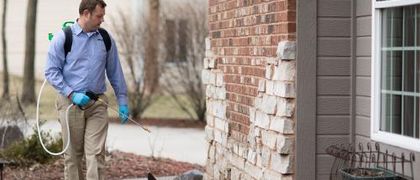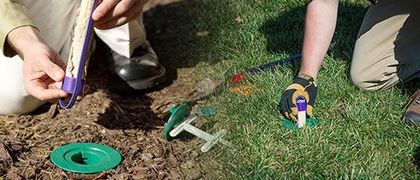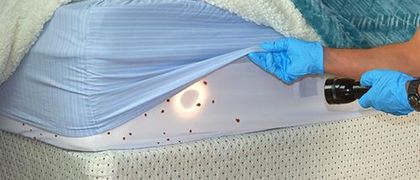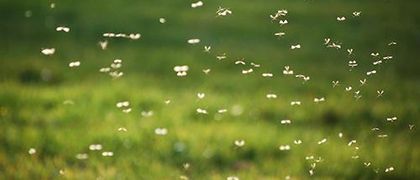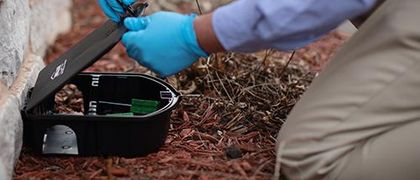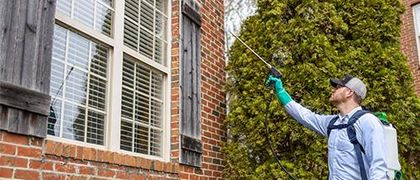How to Check for Bed Bugs After Summer Travel

Summer in the Midwest often means road trips, family vacations, and hotel stays. While these trips are fun, they can also bring home unwanted hitchhikers. Bed bugs are small, reddish-brown insects that hide in luggage and clothing, ready to infest your home when you return.
Knowing how to check for bed bugs after travel helps you prevent significant health issues. A bed bug infestation spreads quickly and often goes unnoticed until bites or droppings appear. Acting early is the best way to get rid of bed bugs before they spread.
Bed bugs are tough to handle alone, but early detection makes a big difference. This guide shows where to look, how to spot signs, and when to call Miller Pest & Termite for professional pest control.
Key Takeaways
- Check hotel rooms for bed bugs before unpacking
- Keep luggage off beds and carpets; unpack on a hard surface
- Wash and dry clothing on high heat after travel to kill bed bugs
- Call Miller Pest & Termite if you see signs of an infestation
Why You Need to Check for Bed Bugs After Travel
Bed bugs feed exclusively on blood, and they hide during the day in tiny crevices around beds, headboards, and bed frames. Because they travel easily, hotels, rental cabins, and even public transportation can all become sources of a bed bug infestation.
If you don’t check before coming home, you may bring adult bed bugs, nymphs, or eggs into your bedroom. They can spread to couches, baseboards, and closets within days. Bed bugs don’t spread disease, but their bites can cause itching, swelling, and sleepless nights.
In the Midwest, families often return from summer vacations and notice bites weeks later. By then, the infestation has already taken hold. A careful inspection right after your trip reduces the chance of bringing them inside.
How to Inspect Your Hotel Room Before Settling In
The first step in bed bug prevention starts before you sleep on a new mattress. Always take a few minutes to check your hotel room when you arrive.
Set your suitcase on a luggage rack rather than the bed or carpet. Bed bugs can climb fabric easily, but they struggle on a hard surface. With your bag safe, pull back the sheets and check the mattress seams for dark spots, shed skins, or live bed bugs. Adults are about the size of an apple seed, while nymphs are smaller and lighter in color.
Inspect the headboard, box springs, and nearby baseboards. Use a flashlight to look in cracks, zippers, and crevices where these hitchhikers hide. If you see droppings, exoskeletons, or any signs of bed bugs, ask for a different room or switch hotels.
Best Practices for Unpacking at Home
When you get home, don’t unpack on your bed or couch. Place your luggage on a hard surface like the garage floor. Remove clothes from your suitcase and store them in plastic bags until you can wash them.
Wash clothes in hot water in a washing machine and dry on high heat to kill bed bugs and eggs. For items you can’t wash, use a steamer or heat treatment instead.
Inspect your suitcase thoroughly. Pay close attention to seams, zippers, and fabric linings. A handheld vacuum can help remove any live bed bugs or eggs, but make sure to empty the vacuum outside immediately.
Signs of Bed Bugs to Watch for at Home
Even with careful unpacking, watch for these signs of bed bugs after a trip:
- Clusters of itchy, red bed bug bites, often in straight lines
- Dark spots or streaks on sheets and pillowcases from droppings
- Shed exoskeletons around mattresses, headboards, or furniture
- A musty odor in bedrooms where bed bugs hide
Check areas near where you sleep, including mattresses, box springs, headboards, and baseboards. Use a flashlight and look closely to find bed bugs before they spread.
DIY Steps vs. Professional Bed Bug Control
If you find signs of bed bugs, don’t ignore them. DIY treatments, such as vacuuming seams, applying heat to fabrics, or using diatomaceous earth around baseboards, can lower their numbers.
But these steps often miss hidden bugs. Bed bugs hide in cracks, furniture joints, and even outlets, making complete removal difficult without expert help.
Miller Pest & Termite uses proven treatments that target every stage of a bed bug’s life cycle. Our team inspects beyond mattresses, checking furniture and hidden areas where infestations grow. This thorough approach gives you long-term relief that DIY methods can’t match.
Making the Right Bed Bug Prevention Choice in the Midwest
Vacations should leave you with memories, not a pest problem. The fastest way to protect your home and your sleep is to act as soon as you see early warning signs. Instead of battling bed bugs alone, trust Miller Pest & Termite to handle the problem with expert care.
Serving Des Moines, Kansas City, and Omaha, our specialists know the local challenges and provide bed bug treatments that work.
Call us today and take back your home from bed bugs before they spread.
FAQs
What do bed bugs look like?
Adult bed bugs are reddish-brown and about the size of an apple seed. Nymphs are smaller and pale, while their eggs are tiny, white, and hidden in crevices.
Can bed bug bites be mistaken for other bites?
Yes. Bed bug bites can resemble mosquito or flea bites, but they typically appear in straight lines or clusters on exposed skin, such as arms, legs, or the back.
How can I prevent bringing bed bugs home from vacation?
Inspect your hotel mattress, headboard, and box springs upon arrival. Keep luggage on a rack, not the bed. When you return home, wash clothes in hot water, dry on high heat, and inspect your suitcase before storing it.
Get Help Now!

